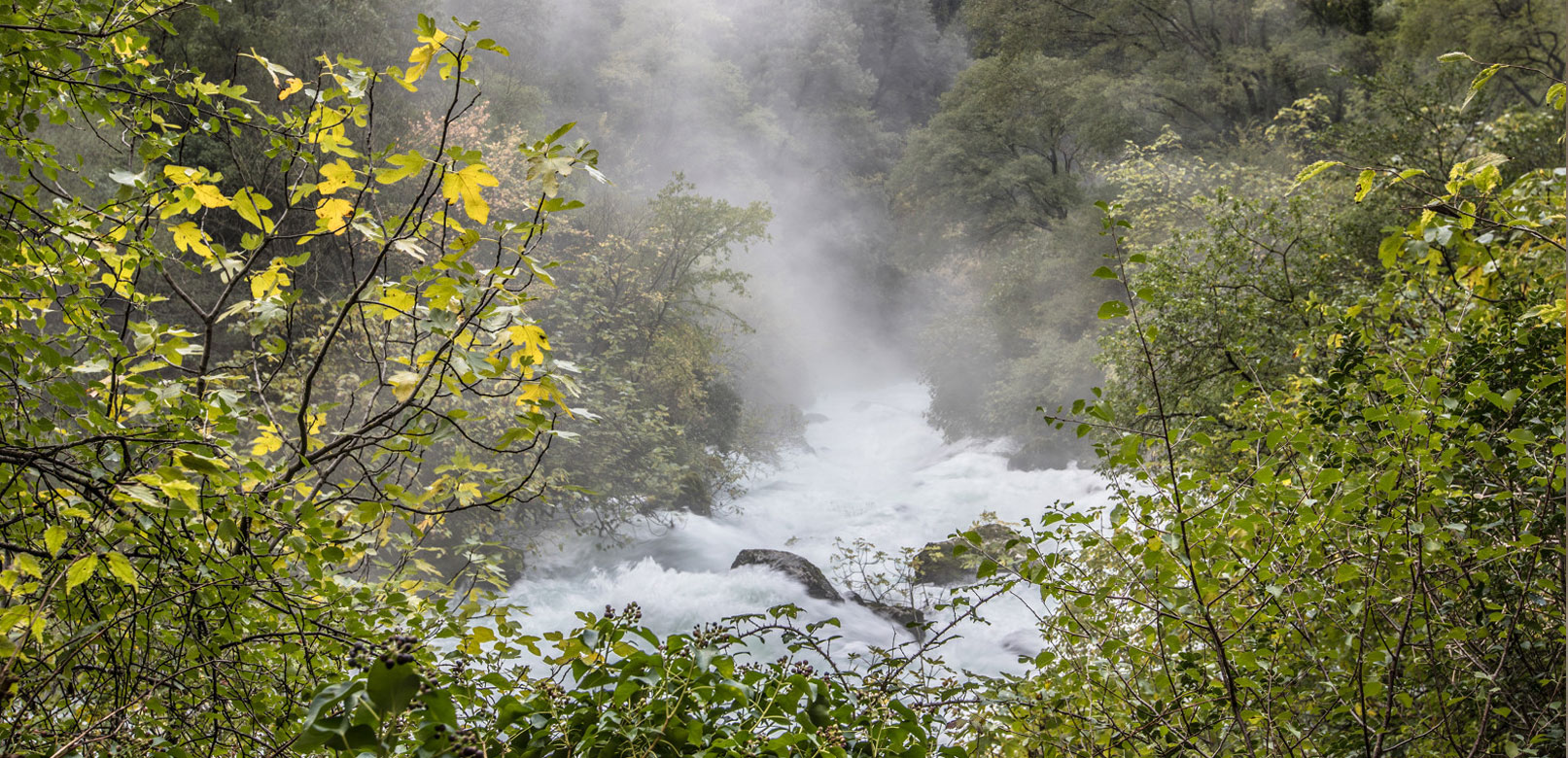
Stories and legends of Vaucluse Provence
The top of stories and legends
The eclectic and unique landscapes around Vaucluse have been a source of inspiration to poets, authors and artists through the ages. So it will come as no surprise then that they have also kindled stories and legends, each more enchanting than the last…
The legend of the cicada
One blazing summer’s day, angels descended from the sky and arrived in Provence.
They were astonished to see abandoned fields and not a soul in sight. They went to visit the local priest, who was enjoying a siesta. They woke him up and asked him why the place was deserted. The priest explained that it was so hot that people couldn’t work in the fields during the day so they went to sleep in the shade while the sun was beating down.
The angels went back up to heaven and explained the situation to God, who sent down a tiny creature with golden wings to sing at the top of its voice in summer and stop people from dozing off when they should be working! And that’s the story of how the cicada was born!

Did you know?
After hatching from eggs, cicada larvae burrow in the ground for a long time (17 years for the Magicicada septendecim species!) before emerging into the world and living for a single summer.
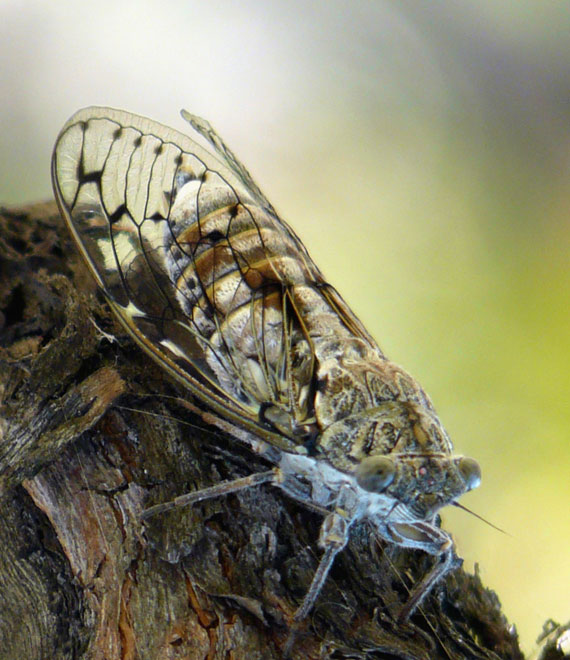
Lavandula, the lavender fairy


Fun fact
In another version of the legend, the tears wept by Lavandula did not fall on her drawing but on the Provençal soil, creating the lavender fields we know and love.
Once open a time there was a beautiful fairy called Lavandula.
Looking for somewhere special to make her home, she flew from the Luberon, passing through Ventoux before finally arriving on the Lure mountain.
She looked through her notebook at the drawings she had made of the places she had visited on her long journey.
She stopped on the page with Haute Provence, whose arid and uncultivated landscapes made her sad. So sad that Lavandula began to cry, hot mauve tears that fell on to her notebook.
She wiped her hand over her stained picture to try and dry her tears, but to no avail. Her tears had turned the whole page deep violet.
Lavandula painted a big strip of blue sky above the purple fields to try and draw the eye away from her terrible mistake. Ever after, Provence has been awash with brightly coloured lavender fields.
The Pré Fantasti: the alchemist brothers
The Pré Fantasti is a house in ruins along the road that leads to the village of Caromb, on the banks of Paty Lake. Once you’ve read the legend, you won’t look at the place in the same way again!
Francesco and Antonio Barberini were cardinals and nephews of Pope Urban VIII who lived in the 17th century. They were banished from the papal court by Pope Innocent X who accused them of financial abuses and threatened to confiscate their property unless they paid an annuity to the Church. Under the protection of Cardinal Mazarin and the French parliament, the brothers escaped punishment.
Francesco and Antonio settled in the village of Caromb in a manor house named The Red Cap where they lived for nine years. Although they did not fraternize with the local villagers, they did welcome scholars into their home.
That’s all it took for the story to become legend!
According to local rumours, they had been forced into exile after carrying out alchemy experiments at the papal court. Experiments that, of course, they were said to continue in Caromb in the house that would later be known as the Pré Fantasti!
In secret, they created an elixir for eternal life that ended up causing a rift between the brothers, Antonio accusing Francesco of keeping most of the profits for himself. During the dreadful argument, an angry Francesco threw a phial of acid in the face of Antonio, who finally succumbed to his injury after hours in agony. They say you can still hear his ghostly cries to this day. Destroyed by guilt, the surviving brother died in the manor soon after.

The mystery goes on
But that’s not the end of the story! Shrouded in mystery, the place was the site of the murder of Marius Jouve, a member of the organisation that promotes the Provençal language, in the early 1900s. After leaving his home in Barroux to visit his barber in Caromb, the poet was shot by an unknown assailant and died. Adding another layer of mystery to the place!
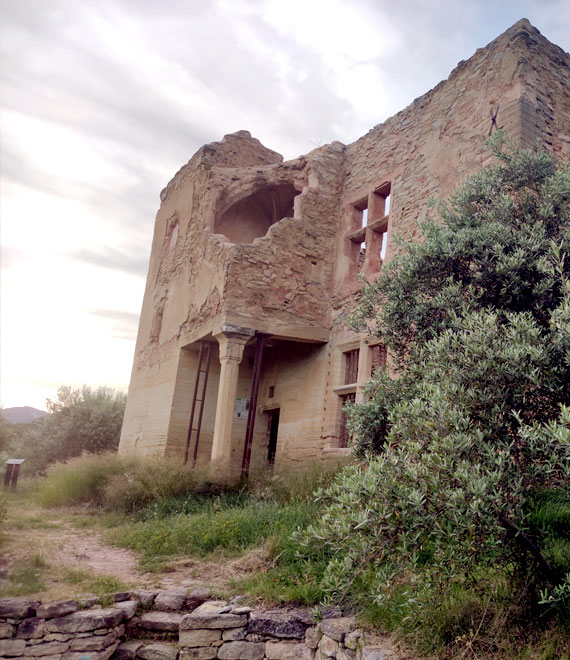
Local dragons: the Drac of Mondragon
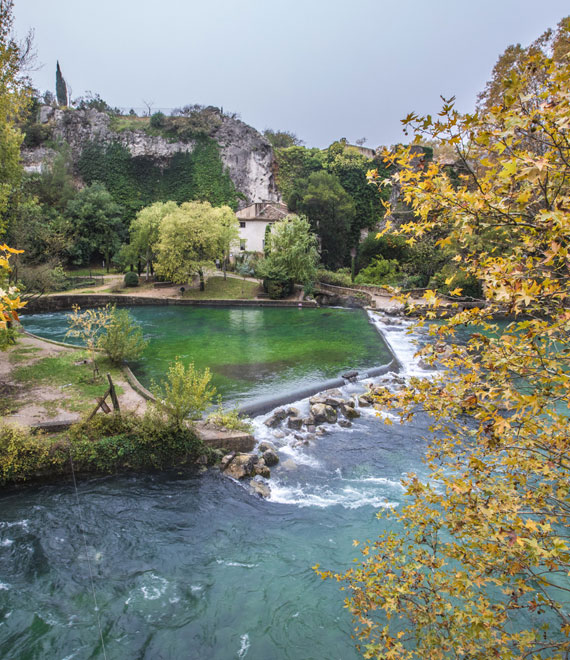

Did you know?
In the 15th century, we find the story of the Couloubre in battle with Petrarch. Legend has it that the Italian poet went walking with his beloved Laure one day and was attacked by the dragon-like creature. Petrarch killed the Couloubre with one strike of his sword. But just before she died, the Couloubre breathed her pestilent breath on to Laure who then died of the plague.
The creature was said to be the cousin of the Drac, a dragon that reeked terror in the waters of the Rhone, in Mondragon.
The Couloubre’s domain was the crystal-clear river Sorgue in Fontaine de Vaucluse.
Half salamander, half dragon, the Couloubre lived in a cave deep in an abyss, abandoned by her dragon husband after the birth of their child, a black salamander with gold spots. She looked everywhere for a new companion, but her hideous appearance put off would-be suitors.
So living alone with only her child and filled with hate, she only came out at night to find food, terrorising the population and slaying any living creature that crossed her path.
The petrified villagers called on Saint Veranus (who became Bishop of Cavaillon) to chase the disgusting creature away.
After lying in wait for the Couloubre for several days, he seriously wounded the creature simply by making a sign of the cross.
She made her last flight from Fontaine-de-Vaucluse to the Alps where she gave her final breath in a village now known as Saint-Véran in tribute to the holy man.
Local dragons: the Drac of Mondragon
The village of Mondragon is named after Mont Dragon, the hill on which the Château du Dragonnet once stood tall.
The Drac had the face and shoulders of a young man on the winged body of a monstrous reptile (according to the description by Provençal lyrical poet Frédéric Mistral) and lived in the Rhone. He fed on the local residents, mostly young virgins, terrorising the village and holding the people to ransom.
The lord of the village Guilhem, exhausted from the monster’s incessant attacks, made a desperate plea.
Whoever succeeded in killing the beast would be rewarded by the hand in marriage of his daughter Guillemette and the title of lord of the village.
One day, a gallant knight Arnaud arrived in the village to accept the challenge.
A fierce battle ensued but Arnaud managed to slay the monster, marrying Guillemette and becoming the new lord of the village, renamed Mondragon!

Worth the detour
An 80-square-metre fresco created by local artist Valérie Micheaux celebrates this epic legend.
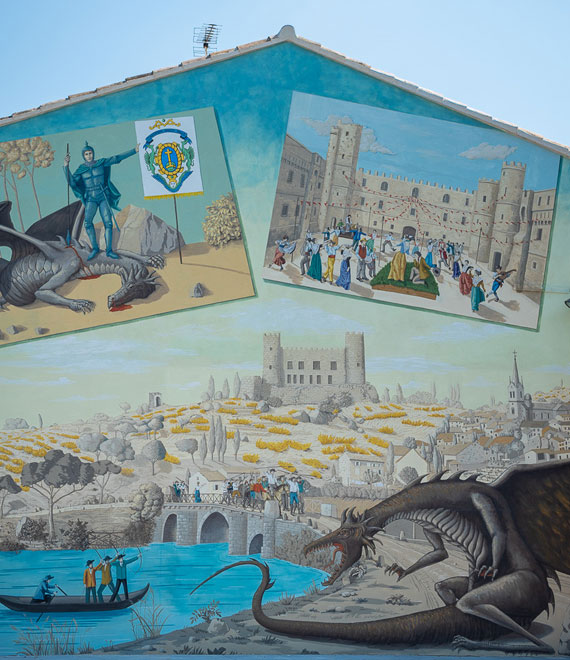
The tragic love story of Lady Sermonde of Roussillon
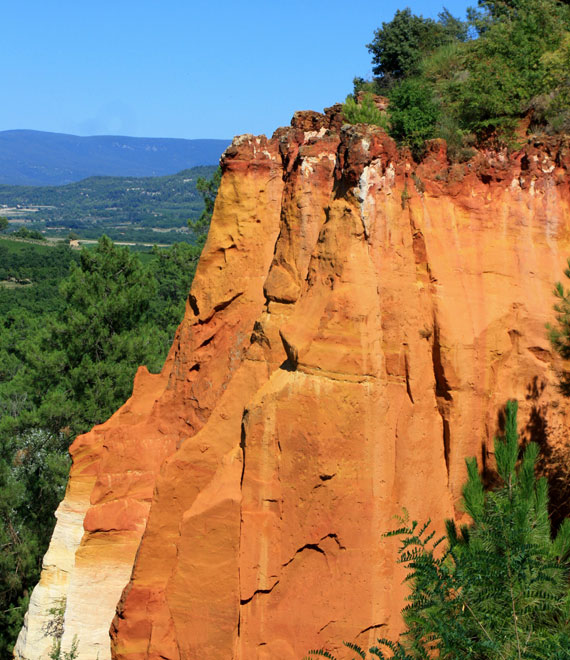

Le saviez-vous ?
Iconic French actor Fernandel made his last big screen appearance in Heureux qui comme Ulysse (Happy He Who Likes Ulysses), filmed in Roussillon.
It is in this movie that we learn about the tragic story behind the origin of the ochre cliffs of Roussillon…
The young and beautiful Sermonde was wed to Raymond, the lord of Roussillon. However, she was being unfaithful to her husband with a young troubadour at the court, an affair that would later seal her fate. When Raymond learned of her deception, he flew into a jealous rage and killed her young lover.
His anger still not abated, he ordered his cook to prepare the young man’s heart for dinner and served it to his wife, who declared the meal delicious.
No doubt to inflict his vengeance to the full, he confessed the awful truth to Sermonde who, mad with grief, threw herself from the top of the cliffs, turning them red with her blood for all eternity.